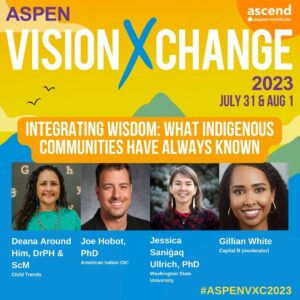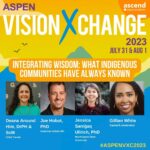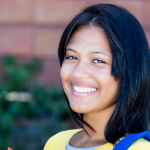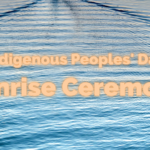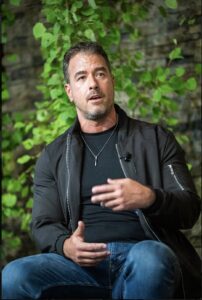
By: Dr. Joe Hobot, President and CEO
What can we do to strengthen education for our children?
I recently had the privilege of addressing this issue at the Aspen Institute’s 2023 VisionXChange gathering in Aspen, Colorado. This conference, comprised of Aspen Institute fellows (including me), national policy makers and members of various national philanthropic enterprises, was centered upon lifting up new ideas, giving space for bold visions and dreams for a world in which all generations – from all communities – can thrive and prosper.
On an all-Indigenous panel, I and others had the opportunity to highlight how the application of Indigenous wisdom – held since time immemorial – has empowered our work. My comments centered on the work of the American Indian OIC – specifically the efforts of Takoda Prep, our accredited high school under contract with Minneapolis Public Schools. At Takoda Prep, as well as at other alternative education programs operating throughout Indian Country, Indigenous cultural expressions are the centerpiece of the student learning experience, empowering more achievement than most ever imagine.
To explain this, I focused on two themes: the problems of mainstream public education and the solutions.
The Problems of Mainstream Public Education
The current system of public education is not just failing, it is dying, and I believe, is beyond reform. The data continues to suggest that the public education system in the U.S. has reached a level of toxicity that the value it adds to our society now has been surpassed by the amount of trauma it inflicts. For the past two decades, since disaggregated data based on demographic groups was first intentionally examined via the No Child Left Behind Act of 2002, statistics continue to demonstrate a persistent and ever-widening achievement gap between students of color and their white counterparts. Despite years of “reform,” replete with untold millions of dollars spent on reducing this gap, there has not been progress. In fact, in many instances, the gap has increased.
Compounding these failings are the continual episodes of active suffering displayed almost daily across the chyrons of our major media outlets. Whether it is recurring school shootings, racially motivated episodes pitting one group of students against another, a ballooning youth mental health crisis, a growing labor shortage fueled by the ever-increasing departures of exhausted teachers or antiquated schools stretched to their breaking point, our current system of formalized education has become too harmful to be considered of any real value.
The unyielding “achievement gap,” coupled with these other ills, are occurring concurrently despite resources being poured into the system for decades and despite ongoing heroic efforts by teachers. When appraised wholistically, these facts reinforce the opinion of those on the outside that this current form of public education is beyond salvaging, and instead is dangling dangerously over the precipice of a horrific collapse.
Much like a patient suffering from a terminal disease, there comes a juncture where the best efforts of the medical support team will fail to make a meaningful difference toward reversing the inevitable outcome. In Aspen, I stated that it is my belief, based on the data and the daily horrors emerging from so many of our schools, that our society is fast approaching just such a critical juncture whereby “the patient” is beyond saving.
The issue at hand is no longer the diagnosis, but rather whether our society has the courage to see the realities of the situation and the political will to make the decision to let the “patient” die. To be sure, this is never easy. In the context of public education, it’s a declaration that must come from communities that are continuously disserved and from the system proprietors who continually plead for more expensive treatments – namely the politicians, administrators and those who specialize in commodifying curriculum and testing instruments. They insist that they have the answers and that with more funding, the system can be “reformed” back to a healthier condition. Unfortunately, the “patient” is beyond any kind of positive response offered by continued care, and the change so many were desperate to avoid is now upon us.
Our students and our communities must now gather our collective strength. We must come together and hold firm in our acknowledgement of the real state of public education. Equally as important, we must rely on the other truths that inform our worldview to prepare all of us for a transition that has already begun.
A Better Way
As it is understood throughout Native American communities, death does not reflect finality, but rather a rebirth into a new form of existence. This is where in Aspen, my comments transitioned into the second thematic consideration, that there is actually good news. New ways of providing schooling for our society’s students and new ways for public education to evolve already have manifested and already are at work in many urban Native American communities. Takoda Prep of AIOIC is among them.
Alternative education programs currently are operating throughout Indian country, benefitting students and stakeholders. Within these specialized schools, teachers also serve as administrators, working closely with families to tailor the academic experience within the cultural beliefs and practices of their people. These practitioners have fully “indigenized” the learning spaces for students, with cultural perspectives, practices and customs woven throughout the educational experience. Native American ways are omnipresent and have become powerful tools validating the cultural identities and the right of these communities to belong within our schools. In these environments, parents tend to want their children to attend, and most importantly, the students also want to attend.
These alternative schools were created through community partnerships with culturally specific nonprofits and charter schools. With a deep understanding of their community and little interest in recreating the problems they saw with mainstream public education, they focused on creating new ways for schools to operate in accordance with their people’s own desires and cultural protocols.
This was the creation story behind the American Indian OIC’s own Takoda Prep – a Contract Alternative Program providing an “indigenized” high school experience for students within the Twin Cities. Without fear of sanction or the need for formalized approval, community leaders here and in other urban locations around the country held firm to their bold visions of better schools and then … created them. Within these settings, Indigenous language and customs are incorporated into activities throughout day. At every turn, the standardized curriculum mandated by state departments of education have been inculcated with the perspectives, interpretations and histories of the Native American community. Simply put, these schools leverage the power of Native American culture to further welcome, inspire and educate the students.
The results speak for themselves. Graduation rates at these schools, including Takoda Prep, typically are double the rates mainstream schools have been posting for decades. The drop-out rates at these alternative schools are one-quarter of mainstream schools. Finally, these schools possess waitlists for future students to enroll, all at the behest of their parents and guardians.
Conversely, across most of the U.S., including Minnesota, large urban school districts are experiencing a mass exodus of students as families vote with their feet – opting to choose other options that better address the academic needs of their children. As a result, many urban school districts are confronting massive budget deficits due to low enrollment.
These alternative schools – like Takoda Prep of AIOIC – represent what is next, what the future of community-valued public education can be and where it ought to be headed. These alternative schools provide high quality education for Indigenous students, and in the more progressive urban settings, such as Minneapolis and Portland, school districts have recognized their value, creating lasting and beneficial partnerships.
The challenge now is to create a movement, a critical mass of citizens who collectively rebuke the excuses of proponents of the established system and embrace the new reality for an education evolution that is already upon us.
As the new school year begins, I’m heartened to know that there are several schools operating throughout Indian Country, like Takoda Prep of AIOIC, that are providing quality educational services in a culturally contextualized manner and achieving the academic results desired by all.
With this transition under way, those of us deep in the work welcome others who are able to see the future that our students and our society need. Please join us.
